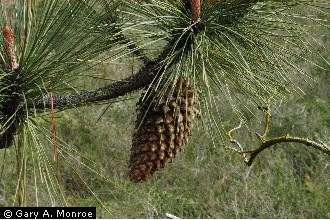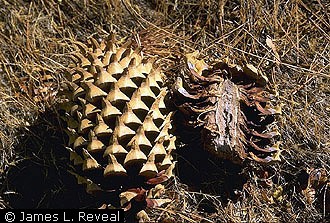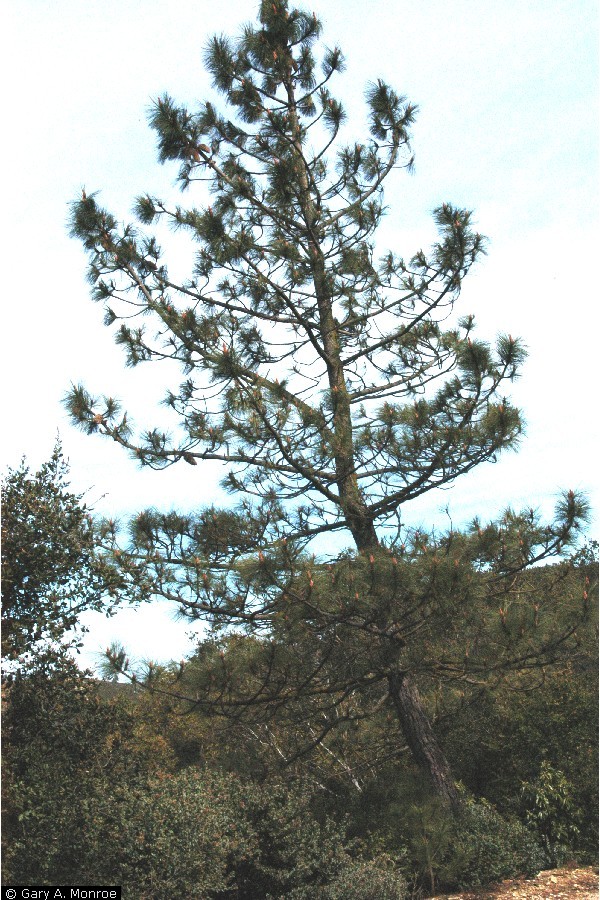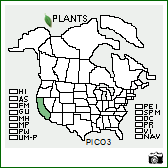Taxonomy: Kingdom - Plantae (plants). Subkingdom - Tracheobionta (vascular plants). Superdivision - Spermatophyta (seed plants). Division - Coniferophyta (conifers). Class - Pinopsida. Order - Pinales. Family - Pinaceae (pine). Genus -Pinus L. Species - Pinus coulteri D. Don
Ecology: Coulter pine occurs in a variety of plant associations, but seldom forms extensive pure stands. Where they do occur, communities dominated by Coulter pine intergrade with chaparral and lower montane coniferous forest. Pinus coulteri is the heaviest-coned pine; one who seeks its shade should wear a hardhat. Coulter pine occurs in both initial communities and later seres. Stands are often even-aged, establishing after fire. Mature Coulter pine is shade intolerant, but seedlings can grow in partial shade. At higher elevations of the Coast Ranges, Coulter pine sometimes replaces blue oak (Quercus douglasii).



